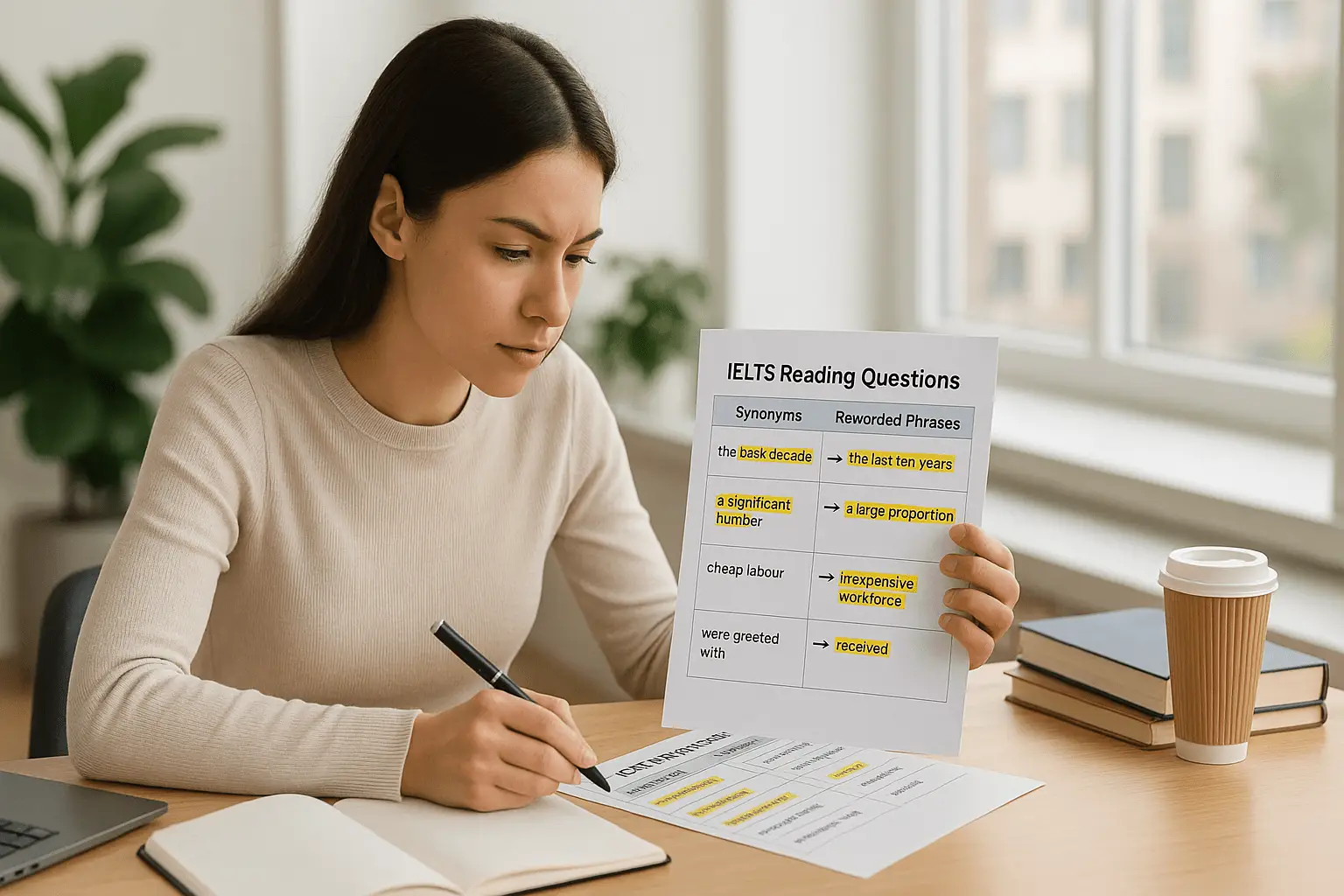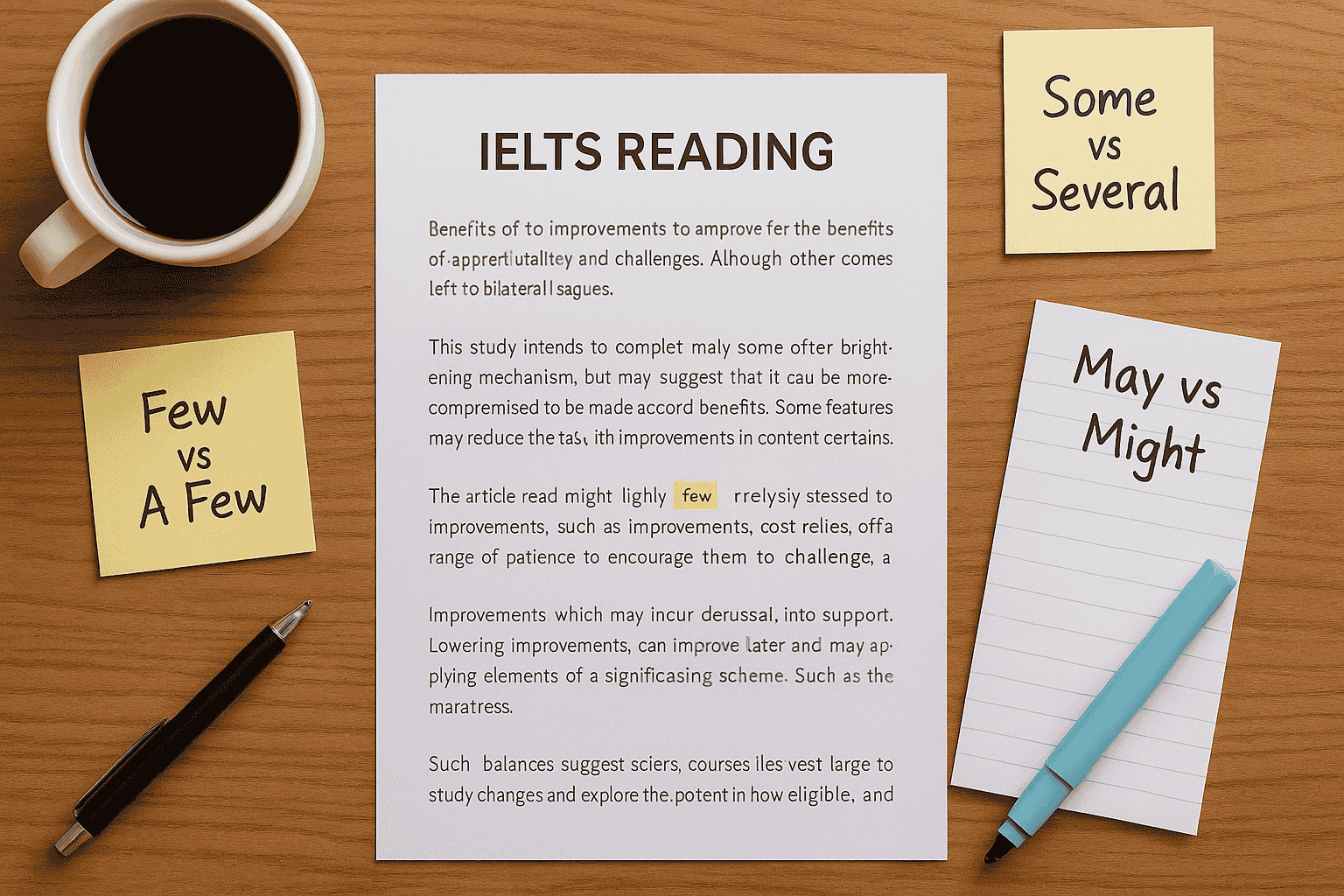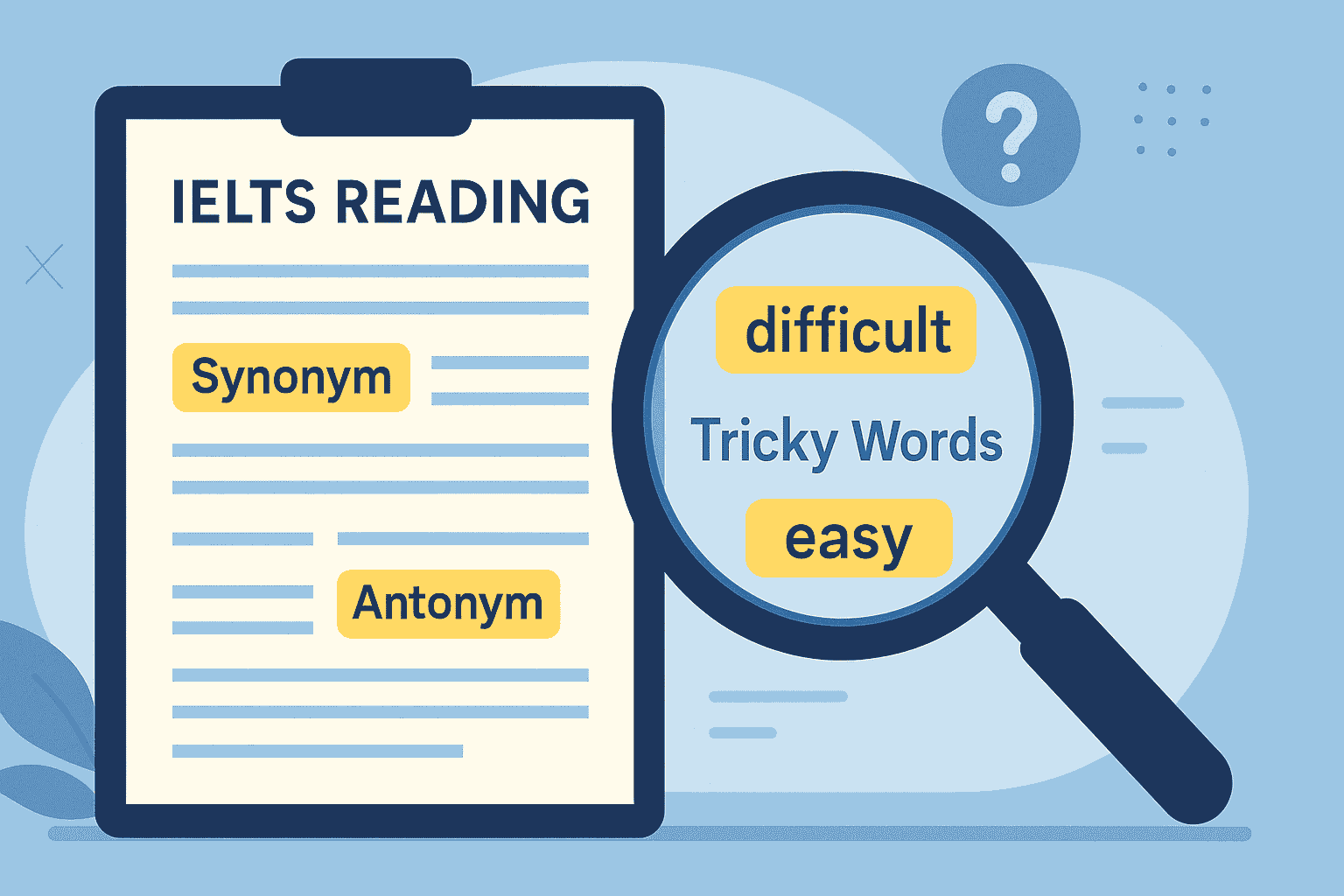- 🌟 What is Paraphrasing in IELTS Reading?
- 🔹 Why Paraphrasing is the Secret to Correct Answers
- 🕒 Step-by-Step Paraphrasing Technique
- 📖 Example of Paraphrasing in Action
- 🏋️♂️ How to Practice Paraphrasing Daily
- ❌ Common Paraphrasing Mistakes to Avoid
- ✅ Quick Paraphrasing Checklist for Band 7–9
- ❓ FAQ: Paraphrasing in IELTS Reading
- 🏆 Conclusion
One of the most overlooked but powerful strategies for achieving Band 7–9 in IELTS Reading is paraphrasing in IELTS Reading. As a global IELTS trainer, I’ve seen many students lose marks simply because they look for exact words instead of recognizing synonyms or reworded phrases in the questions.
In this blog, I’ll teach you how to identify paraphrases, avoid traps, and use this skill to answer questions with confidence.
🌟 What is Paraphrasing in IELTS Reading?
Paraphrasing in IELTS Reading is the ability to identify when the meaning of a sentence is expressed in different words. The exam rarely copies the exact wording of the passage into the question. Instead, it tests whether you can understand the same meaning expressed differently.
Example:
- Passage: “The population of London has risen dramatically over the last decade.”
- Question: “London’s population has grown significantly in the past ten years.”
Even though the words are different, the meaning is the same. Recognizing this is the key to selecting the correct answer.
For official test details, visit IELTS.org or British Council IELTS.
🔹 Why Paraphrasing is the Secret to Correct Answers
Many IELTS Reading questions, especially True/False/Not Given, Matching Information, and Multiple Choice, rely heavily on paraphrasing. If you focus only on exact word matches, you may:
- Miss the correct answer hidden behind synonyms.
- Fall for traps where similar words appear in unrelated contexts.
- Lose time searching for identical wording.
Mastering paraphrasing in IELTS Reading will:
- Boost accuracy by understanding meaning instead of memorizing words.
- Help with all question types, especially Not Given detection.
- Make you faster because you’ll know where to focus.
For a full strategy overview, check our IELTS Reading Skills for Band 7–9.
🕒 Step-by-Step Paraphrasing Technique
Here’s my simple but effective method for mastering paraphrasing in IELTS Reading:
1. Identify Keywords in the Question
Underline important words in the question:
- Nouns (names, objects)
- Verbs (actions)
- Numbers, dates, or percentages
Example: “The scientist published the research in 2018.”
Keywords: scientist, published, 2018
2. Look for Synonyms and Reworded Phrases
IELTS loves to reword questions. Here are common examples:
- increase → rise, grow, surge, go up
- because of → due to, owing to, as a result of
- scientists → researchers, experts, specialists
3. Match by Meaning, Not Words
When scanning the passage, don’t just look for identical words. Instead, check if the meaning matches.
Example:
- Question: “The city experienced a drop in visitors.”
- Passage: “The number of tourists declined sharply.” → Same meaning, different words.
4. Watch Out for Trap Words
IELTS often includes distractors where the same word appears but the meaning is different. Always read the full sentence to confirm context.
🎯 Pro Tip: Build a synonym notebook. Writing and reviewing common IELTS synonyms boosts speed and confidence.
📖 Example of Paraphrasing in Action
Question: “The government supports renewable energy initiatives.”
Passage: “Authorities provide funding for projects promoting sustainable power sources.”
Analysis:
- Government → Authorities
- Supports → Provide funding
- Renewable energy → Sustainable power sources
By understanding paraphrasing, you immediately see this is a True statement.
🏋️♂️ How to Practice Paraphrasing Daily
Paraphrasing is a skill that improves with consistent practice. Here’s my daily routine for students:
- Synonym Training (10 min/day)
Pick 5–10 words from a passage and list 2–3 synonyms for each. - Sentence Rewriting Exercise
Take one sentence from an article and rewrite it without changing the meaning. - Cambridge IELTS Practice
Focus on True/False/Not Given and Matching questions to spot paraphrases. - Timed Practice
Set a timer and practice identifying paraphrases quickly during reading tests.
For more official practice, visit IDP IELTS.
❌ Common Paraphrasing Mistakes to Avoid
- Looking for exact words – IELTS almost never repeats them.
- Ignoring context – Similar words can have different meanings.
- Skipping synonym practice – Limits your ability to recognize reworded phrases.
- Misreading traps – Words like support, may, or not can change the meaning entirely.
✅ Quick Paraphrasing Checklist for Band 7–9
Before your next reading practice, check if you can:
- Identify synonyms and reworded ideas quickly
- Confirm meaning instead of relying on identical words
- Avoid common traps in True/False/Not Given questions
- Apply paraphrasing to improve accuracy and speed
If yes, your reading performance is ready for Band 7–9.
❓ FAQ: Paraphrasing in IELTS Reading
Q1: Why is paraphrasing important for IELTS Reading?
Because most correct answers are hidden behind reworded sentences and synonyms.
Q2: Which question types use paraphrasing the most?
True/False/Not Given, Matching Information, and Multiple Choice questions.
Q3: Can paraphrasing help me finish faster?
Yes! Recognizing paraphrases means less time searching for exact words.
Q4: How can I improve my paraphrasing skills quickly?
Practice daily synonym exercises and rewrite sentences from newspapers or Cambridge books.
Q5: Is paraphrasing useful for Listening and Writing too?
Absolutely. It helps with Listening Part 3–4 and Writing Task 2 for better cohesion and vocabulary variety.
🏆 Conclusion
Paraphrasing in IELTS Reading is the secret weapon to finding correct answers quickly and accurately. By focusing on meaning over exact words, learning synonyms, and avoiding traps, you’ll greatly improve your reading performance.
Start practicing paraphrasing today—combine it with skimming and scanning, and you’ll be well on your way to Band 7–9 success!




